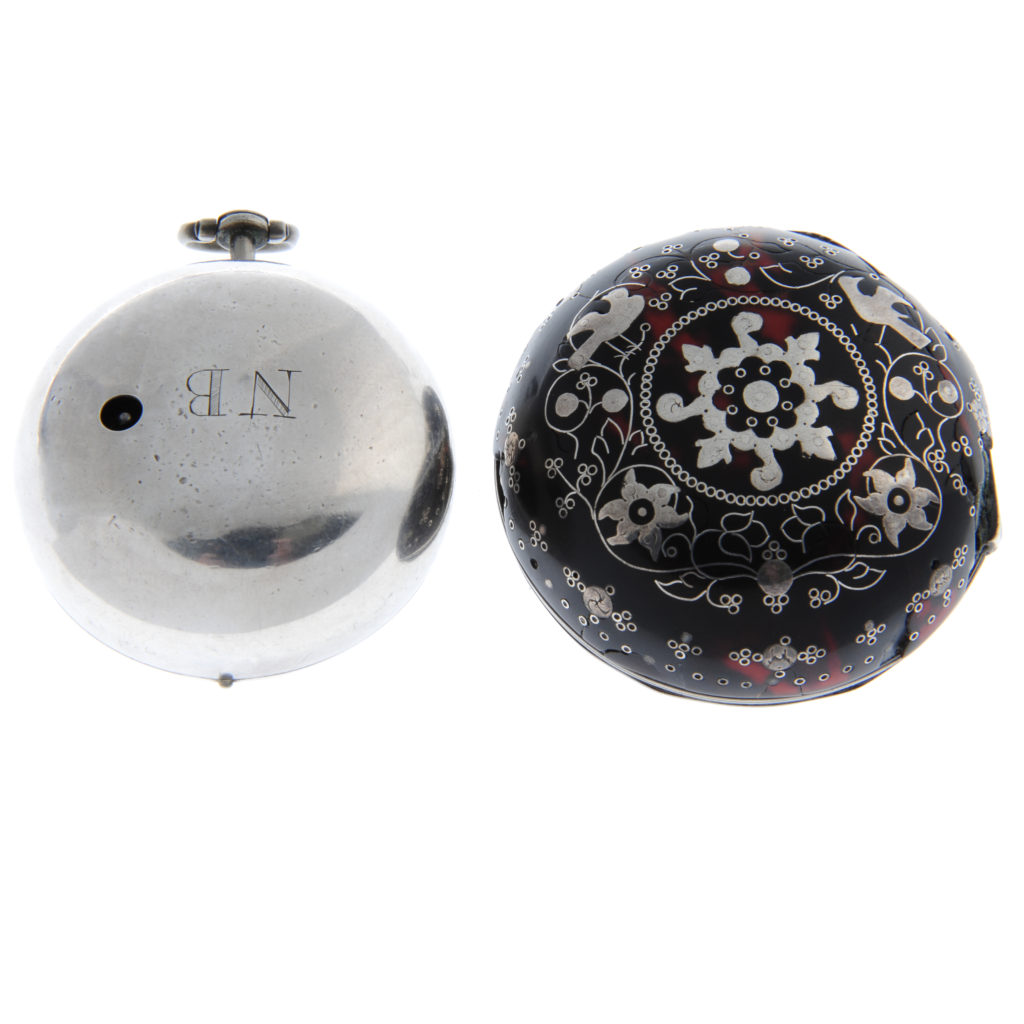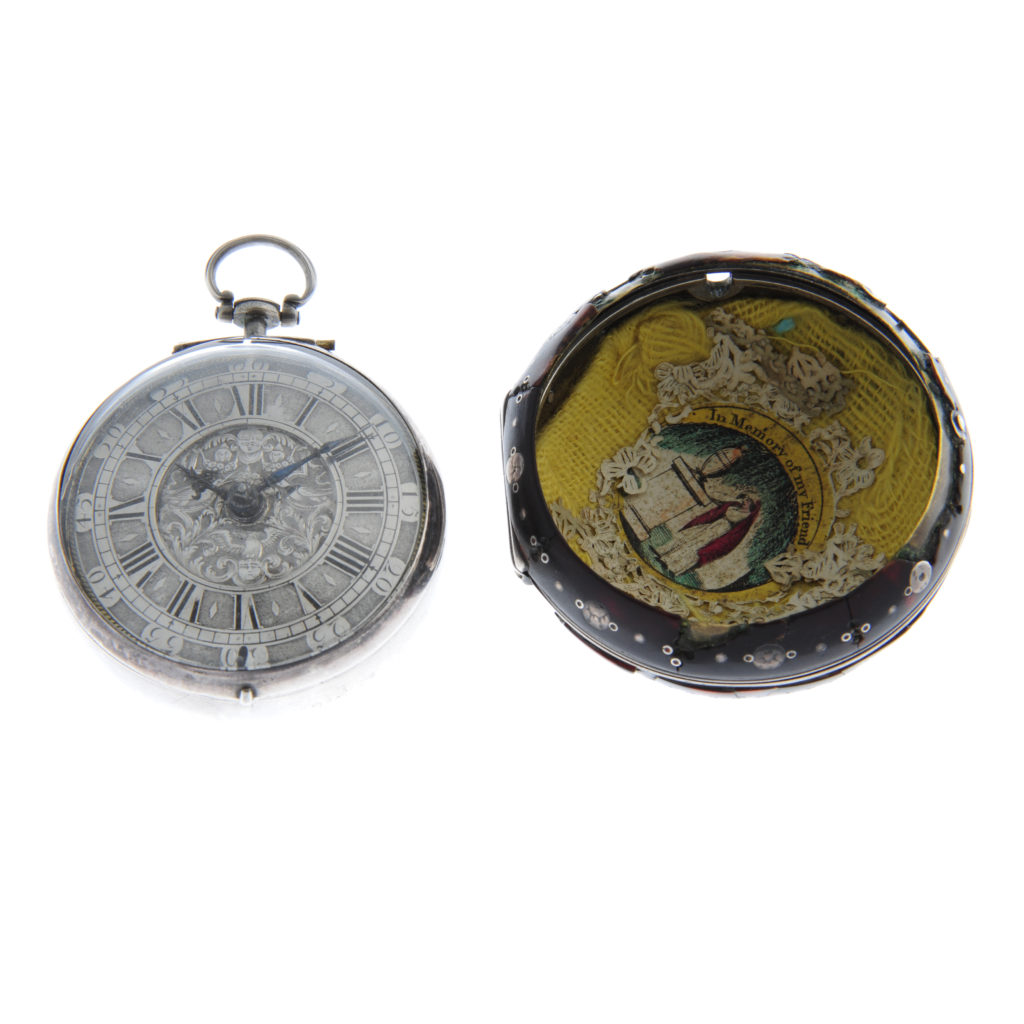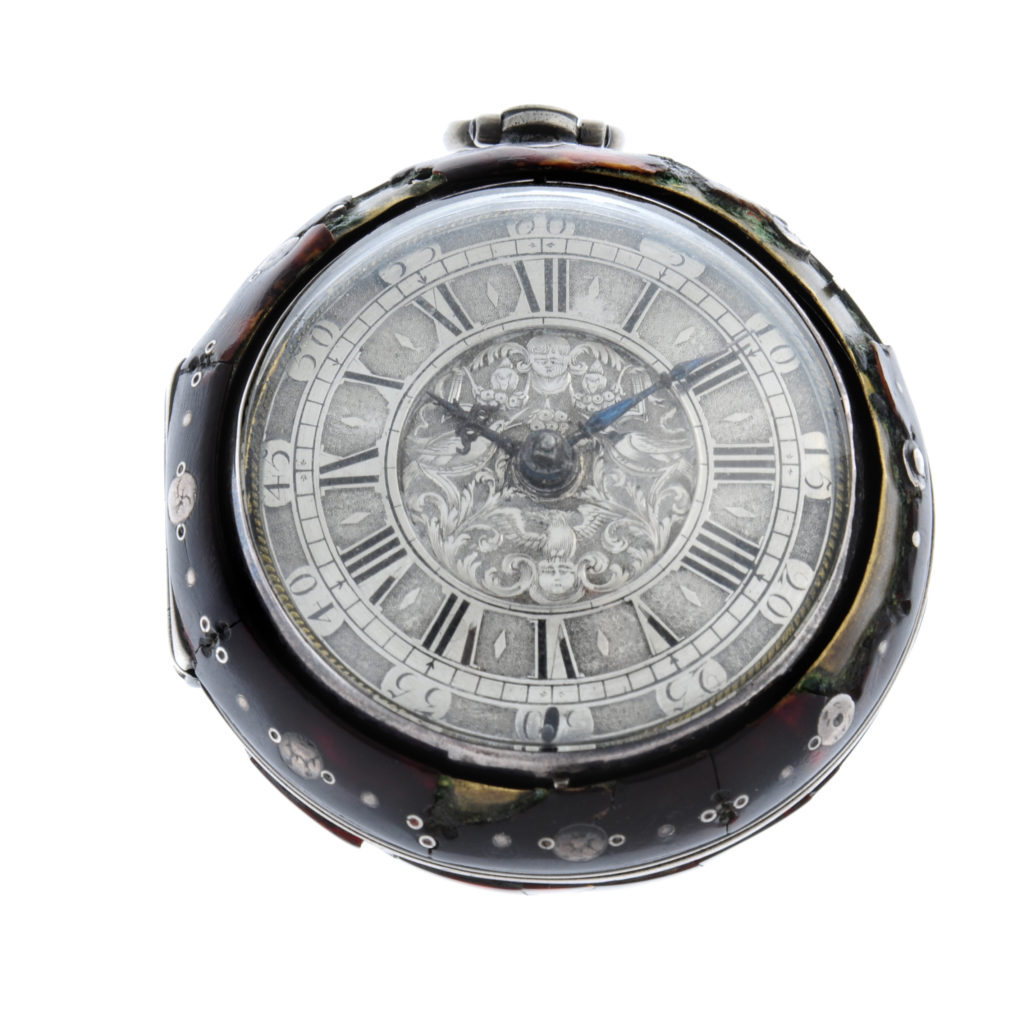George Etherington was a clockmaker and watchmaker during the late 17th and early 18th century. He was admitted to the Clockmakers Company in 1684 on the 1st of December. Sixteen years later, on July 23rd 1701, Etherington began as Assistant to the Court of Clockmakers Company.
The Clockmakers Company, officially recognised in 1631 as The Worshipful Company of Clockmakers, was created to recognise and protect horologists’ trade within the City of London and gave it a regulatory authority to control it within a ten-mile radius. It has a body in the style of The Master, Wardens and Fellowship of the Art and Mystery of Clockmaking. The Company still exists and accepts members today. It works with many watchmakers and horologists as well as offering education to those wishing to become one.
George Etherington
George Etherington became the Youngest Warden in 1706. During this time other great names were members including Thomas Tompion and Joseph Windmills who also served as youngest warden in 1702. In 1709 Etherington was chosen as Master of the Clockmakers Company for one year. This was considered the highlight of his career and succeeded by Thomas Haydon.
During his time at The Company, his work consisted largely of long clocks, commonly known as grandfather clocks, table clocks and pocket watches. His pocket watches were crafted with chain and fusee movements. They were crafted with beautiful tulip pillars which were popular during the beginning of the 18th Century. His pocket watches also featured champleve dials and intricately engraved movements. There is an example of his work in the British Museum. This example is similar to the work included in the Luxury Watch Sale which took place on 23rd November 2023.


The Changing Style of Pocket Watches
Pocket watches were developed in the 16th century. Initially, they were worn around the neck due to their large clock-watch hybrid appearance, which had brass cylindrical designs and was much larger than their later designs and at first only featured an hour hand.
Styles began to change as the trade became more widely known. In the 17th century, they were more commonly worn by men in pockets rather than as a pendant. It was common for women to wear watches as a pendant through to the late 19th century. Portable watches whether they were pocket or pendant watches were considered luxury items and up until the 1720s almost all pocket watches included a verge escapement.
Different Types of Pocket Watches
Pocket watches were made in various ways, there are pair cases, open-face, full hunter or half-hunter cases. Pair cases simply have a second case surrounding the inner case as a means to offer further protection to the movement and dial.
Hunter pocket watches have a hinged plate or lid covering the front and back of the watch to protect from dust and dirt, half hunter pocket watches have a small opening to the case front making the dial semi-visible. Open-face pocket watches have no protection to the front of the case but are fully visible. The name ‘Hunter pocket watch’ originated in England where fox hunters would be able to open the case with one hand while holding the reins of their ‘hunter’ or horse in the other hand.
Pocket watches were predominantly used by men into the 20th century and were previously considered feminine, however began to get phased out during the time of the First World War as men realised they were much more accessible and easy to read and thus more practical for soldiers fighting the trenches. Early wristwatches looked pretty much like pocket watches worn on your wrist and are referred to as ‘trench watches’. Pocket watches were then mainly used on the railroads until their final demise around 1943, with only a slight revival as a fashionable piece when worn with a three-piece suit in the 1970s and 1980s.
George Etherington Pocket Watches at Auction
Valuations
Our valuations are free, with no obligation to sell with us. Our experts will value your item with an estimate, so you can find out what it could achieve at auction.
The process is simple. You can fill in a form online or book an appointment to visit either of our offices in Birmingham or London. Virtual valuation appointments are also available.
Find what you’re looking for
Make sure you don’t miss finding that special something by signing up to our email alerts. You’ll be the first to know when catalogues become available, receive invitations to special events and preview the hottest lots from our auctions, plus much more.
Why not use our free personal shopping service? Sign up for lot alerts and tell us exactly what you are looking for. Each time we upload a catalogue, we search for your keywords and email you lots matching your interests. Your personalised email will include images, lot descriptions and auction details.
Kain Holroyd | Head of Watches



